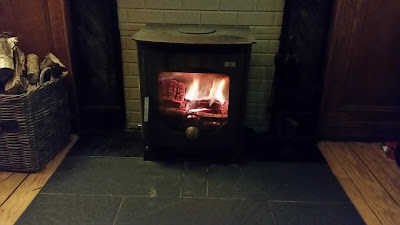I've been asked several times about what I've written on fairies by people looking into my writing on the subject. I finally decided it would just be easier to write a quick bit here about it. I'm including articles, presentations, and books. I am not including the range of my blog material on Living Liminally or on Patheos Agora: Irish-American Witchcraft or Witches&Pagans On the Fairy Road.
(updated from 2020)
Articles
“The Witch, the Bean Feasa, and the Fairy Doctor in Irish Culture”. Air n-Aithesc, vol. 1 issue 2, Aug. 2014
“Fairy Witchcraft Master class”, Spirit & Destiny, July 2016
“Enchantment in the Modern World”, Mystic Living Today ezine July 2016
“Scottish Fairies and the Teind to Hell”, Pagan Dawn, Spring 2017
“Fairy Witchcraft: Old Ways in New Days” Watson’s Mind Body Spirit Magazine, Spring 2017
“Fairies, Word and Deed” Watson’s Mind Body Spirit Magazine, Autumn 2018
“Fairy Queens and Witches” Pagan Dawn, Lammas 2019 no 212
“Queens of Fairy” The Magical Times, Oct 2019 – March 2020, issue 27
“Conceptualizing Fairyland” Pagan Dawn, Imbolc 2020 no 214
“The Power of Transformation”, Witch Way Magazine, Midsummer special issue 2020
“Fairies and the Stars”, Pagan Dawn, Lammas-Autumn Equinox 2020, no 216
“Sexuality and Gender Among the Good Neighbours: the Intersection and Inversion of Human Norms in Fairylore”, written for Revenant Journal 2020, cut, posted on academia.edu; FIS newsletter 2021
“Queens
of Fairy” Watkins Mind Body Spirit Winter 2021
“Imagining
Fairyland”, Pagan Dawn, Imbolc issue, 2022 no 222
“The
White Elephant in the Room: Racism and Diversity in Fairy Belief”, Witches
& Pagans Magazine, issue 39, 2022
“Fairy
Queens and Witches”, Pagan Dawn, Beltane Issue, 2022, no 223
“Finding
the Aos Sidhe”, ev0ke magazine, June 2022
“Marriage
and the Otherworld”, FIS newsletter, 2023
“The Aos Sidhe: The Good Folk of Ireland”, Pagan Dawn. Beltane issue 2023. No 227
On Academia Edu
(Conference Presentations)
"Álfar, Aelfe, and Elben: Elves in an historic and modern Heathen context", HWU conference 2019"Evolution of the Fairy Courts: from Scottish Ballads to Urban Fantasy", OSU Fairies and the Fantastic Conference 2019
“Unseely
to anti-hero: The Evolution of Dangerous Fairies in Folklore, Fiction, and
Popular Belief” Hertfordshire University’s ‘Ill Met By Moonlight’ conference,
2021
"Fairies
as 'Other': Gender and Sexuality Across Western European Fairy Belief" Folklore
Open Voices: folklore for all, folklore of all conference, 2022
https://independent.academia.edu/MorganDaimler
Books
A Child’s Eye View of the Fairy Faith, 2012 (out of print)
Pagan Portals: Fairy Witchcraft, 2014
Fairycraft 2016
Fairies: A Guidebook to the Celtic Fair Folk; 2017
Travelling the Fairy Path 2018
Pagan Portals Fairy Queens 2019
A New Fairies Dictionary 2020
Pagan Portals Living Fairy 2020
Pagan
Portals Aos Sidhe
2022
Pagan
Portals 21st Century Fairy 2023




,_f.8v_-_BL_Add_MS_28330.jpg)



